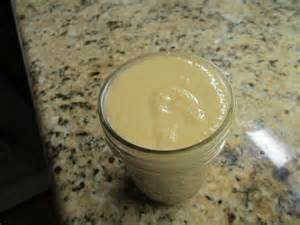Most people shampoo their hair a few times a week and may not realize the toxic mix they are absorbing through their skin. When you shampoo your hair, the 20 blood vessels, 650 sweat glands and 1,000 nerve endings soak in the toxins. When toxins are absorbed through your skin, they bypass your liver and enter the bloodstream and tissues directly….with no filtering.
If you ever tried reading the label on your shampoo bottle you might feel like you’re reading Latin, since many ingredients are listed by their chemical name. Many common ingredients in your shampoo are linked to cancer, asthma, neurological problems, skin irritation and other health problems.
You simply cannot assume that because a product is for sale in the marketplace it is safe. Deceptive advertising seems common place with many companies, as many products are labelled natural and yet contain hazardous ingredients.
Eleven commonly used chemicals in shampoos
Some of the basic ingredients in shampoo include surfactants, preservatives, fragrance, color as well as active or inactive ingredients that can include stabilizers, thickeners and products to nourish or strengthen your hair.
This is by no means a complete list of chemicals or their side effects.
Diethanolamine (DEA): DEA or diethanolamine is a wetting agent used to create a rich lather that many consumers expect in their shampoo. DEA reacts with other chemicals in the shampoo and can create an extremely potent carcinogen called NDEA (nitrosodiethanolamine). NDEA is easily absorbed through the skin and is linked with bladder, esophagus, liver and stomach cancer.
To eliminate your exposure to NDEA avoid these ingredients:
Cocamide DEA or Cocamide Diethanolamine
DEA Lauryl Sulfate or Diethanolamine Lauryl Sulfate
Lauramide DEA or Lauramide Diethanolamine
Linoleamide DEA or Linoleamide Diethanolamine
Oleamide DEA or Oleamide Diethanolamine
Any product containing TEA or Triethanolamine
Sodium Lauryl Sulphate (SLS) : SLS is a detergent and a surfactant used to break down surface tension allowing the shampoo to become a more effective cleanser. SLS is also linked to Nitrosamines a potent carcinogen that causes your body to absorb nitrates, another known carcinogen. Over 40,000 studies in the PubMed science library include information on the toxicity of this chemical.
Sodium Laureth Sulphate (SLES) : SLES is a concern as it can become contaminated with Dioxane, during the manufacturing process. Dioxane is a suspected carcinogen. Because the liver has a difficult time metabolizing this effectively, it remains in the body for an extended period of time.
Propylene Glycol: Although this ingredient is used in anti-freeze for your car radiator, you can also find it in moisturizers, hand sanitizers, baby products, conditioners and shampoos. MSDS sheets warn users to avoid skin contact, yet it remains in many cosmetics. It is linked to liver abnormalities and kidney damage.
Benzalkonium Chloride and Benzethonium Chloride: These chemical functions as a preservative, antimicrobial and surfactant in shampoo. They are also associated with severe skin, eye, respiratory irritation and allergies.
Formaldehyde: Quaternium-15 is a formaldehyde releasing preservative. There are 85 studies in the PubMed science library that include information on the toxicity of this chemical. On a scale of 0-10, this product rates an 8 on the Skin Deep database. The European Union has determined that this ingredient ‘may not be safe’ in cosmetics.
Cocamidopropyl Betaine- (CAPB) EWG Skin Deep lists this as a moderate overall hazard, associated with irritation and allergic contact dermatitis. According to PubMed, the increasing rates of sensitization led to CAPB’s being named Allergen of the Year in 2004.
Methylchloroisothiazolinone: According to Skin Deep, this widely used preservative is associated with allergic reactions and there is also some cancer concern.
Methylisothiazolinone: According to Skin Deep, this widely used preservative is associated with allergic reactions. Lab studies on brain cells of mammals suggest that it may also be neurotoxic. Methylisothiazolinone can be very irritating. For this reason, it is mostly used in rinse-off products. The concentrations in leave-on products are restricted to a minimal amount to lessen the risk of a negative reaction.
Fragrance: Artificial fragrances can contain hundreds, even thousands of chemicals, including phthalates. Since fragrances are protected as a trade secret, the full ingredients do not have to be listed on the label. Fragrances are a major cause of allergic reactions.
How do I find safe products?
Research the company you are buying products from. Go to company websites, look up their mission statement. Check out their product lines. Are they using synthetic ingredients or organic? Do they offer 3rd party testing and certification of their products?
Learn to read labels. This can be a challenge, since many ingredients are listed by a chemical name. Two great resources to help you get started are EWG’s Skin Deep data base and Ruth Winter’s book: A Consumer’s Dictionary of Cosmetic Ingredients, which has a wealth of information.
Understand that certain terms can be ambiguous. There is no federal regulation for the word natural. So just because something states it is natural it doesn’t mean it is safe. Let’s be clear, the FDA does not define what it means for a product to be labeled “organic” or “natural” or “hypoallergenic”. The processing of a natural product can involve the addition of chemicals to break it down to a useable formula.
Natural and organic are not the same. Natural can mean the product was derived from a natural source, while the tern organic means that the plant was grown without the use of toxic chemicals and pesticides, however just because some organic products were used, doesn’t mean the entire product is organic.
Made with organic ingredients: According to the NSF (National Sanitation Foundation) site, products with at least 70 percent organic ingredients can use the phrase “made with organic ingredients” on their label. Products with less than 70% organic ingredients must list those items on the label, and can’t have a USDA organic label on the product.
3rd party certification. USDA organic certification means that 95% of the ingredients are organic. NSF certification means that 70% organic ingredients were used.
References
A Consumer’s Dictionary of Cosmetic Ingredients, Ruth Winter, M.S. Sixth Edition 2005
EWG Skin Deep Cosmetics Data Base http://www.ewg.org/skindeep/
MSDS http://www.msds.com/








